Spiders may be small creatures, but their eating habits are fascinating. In this article, we delve into how spiders eat.
What is a Spider?
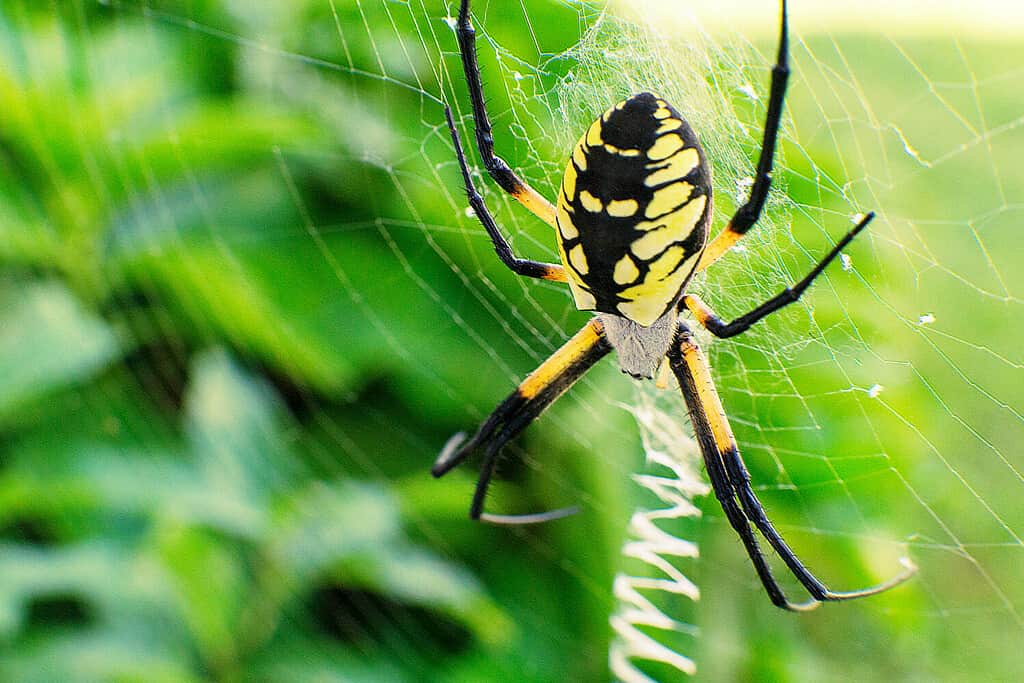
How spiders eat is a fascinating subject.
©Theodore P. Webb/Shutterstock.com
Spiders are eight-legged arachnids that belong to the Arachnida class and the Araneae order. These animals are famous for their web-spinning abilities, which they use to capture their food and create nests. They have two main body parts: the cephalothorax (head and torso combined) and the abdomen. Additionally, they possess specialized organs called chelicerae (fangs) that inject venom into their prey.
Globally, there are more than 45,000 distinct kinds of spiders that have developed special features that enable them to live in numerous habitats. Although most spiders are harmless to humans, some species can be hazardous if provoked or disturbed. It is worth noting that not all spiders make webs. Some actively hunt their quarry or patiently lie in wait for them.
How Do Spiders Eat?
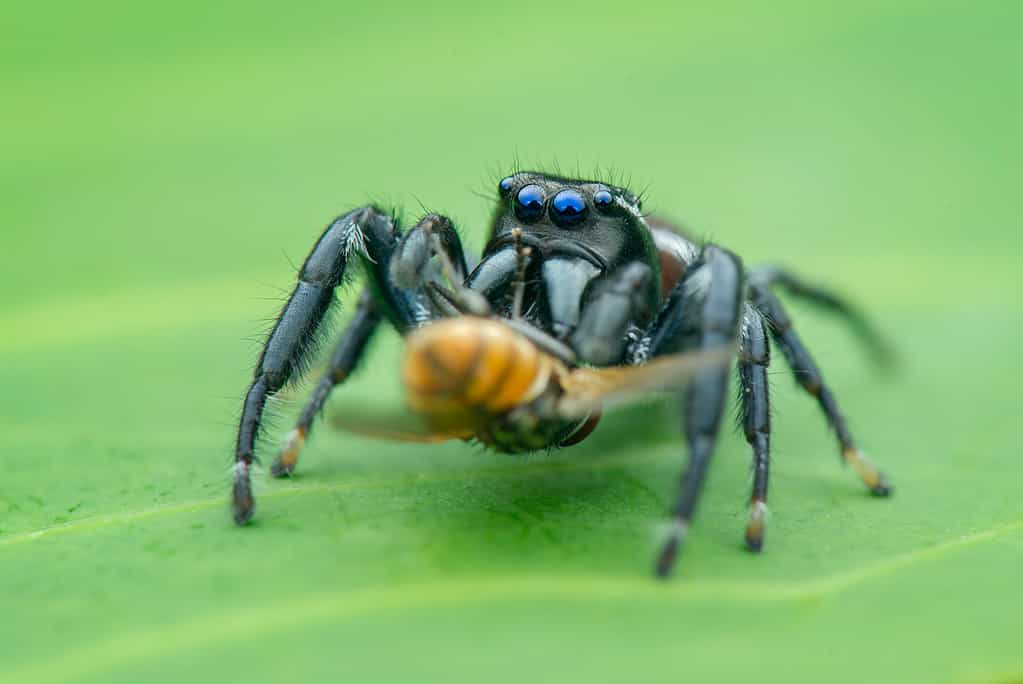
The subject of how spiders eat varies from species to species. Some build webs, and some actively hunt.
©DWI YULIANTO/Shutterstock.com
How spiders eat is a fascinating subject. Two small limbs, known as pedipalps, are positioned near the spider’s mouthparts, and its first set of legs act as arms to hold food. These organs also serve as “taste buds” for spiders, as they have chemical receptors that help them to smell and savor their cuisine.
Spiders do not have sharp teeth and large jaws to chew their food like other types of animals. Instead, some spiders use external chelicerae to crush their prey after covering it with digestive liquid. Other spiders, like cobweb weavers and crab spiders, don’t have the strength to mash their food, so they secrete digestive fluids over it to partially digest it beforehand.
Spiders lack the strength to hold their prey, so they use silk to restrain it. Next, they bite the prey and inject digestive substances that break down the internal parts. The liquefied parts are then consumed through the spider’s mouth, and the empty shell is discarded.
Spiders have the unique ability to generate suction with their stomachs, which draws in food. This process is accomplished by their muscles expanding and contracting in a manner similar to a pump, which causes the food to be drawn into the foregut, where it is stored. Digestive fluid is then pumped up and down the digestive tract to help dissolve the food before it is ultimately sent to the hindgut to complete the digestion process.
What Do Spiders Eat?

Did you know that spiders eat without tongues or teeth?
©Vida Shams/Shutterstock.com
How spiders eat and what they eat varies across the many spider species. Here are some common spiders in North America and what they eat.
Black Widows
Black widow spiders are predatory creatures that feed mainly on insects. They hunt using their strong webs to ensnare their prey and then use their powerful venom to paralyze it. They also feed on smaller spiders and sometimes other invertebrates. Black Widow spiders are mostly active at night, and they use their keen sense of sight to detect movement and locate their prey. They then move quickly to capture their victims with their long, sticky webs. They are incredibly efficient hunters and can consume several insects in a single night.
Wolf Spiders
Wolf spiders are carnivorous predators that hunt and catch their prey. They mainly feed on small insects and arthropods, such as beetles, crickets, grasshoppers, and moths. Wolf spiders also eat other spiders, as well as insect eggs and ants.
Wolf spiders employ a variety of hunting techniques to capture prey. Some use ambush tactics, waiting in a strategic spot until their victim passes by. Others actively pursue their quarry, using their strong eyesight to spot them. Wolf spiders also use vibration-sensing organs, called trichobothria, to detect prey movement.
Jumping Spiders
Jumping spiders are a type of spider that feeds primarily on insects. They eat moths, crickets, flies, and mealworms. Scientists have also observed them eating nectar.
They have excellent vision and use it to locate their prey. To catch their food, they use their powerful legs to jump and pounce on their intended target. Once they have landed on their prey, they use their fangs to inject venom to paralyze and kill it. Jumping spiders have excellent vision and 8 eyes, which makes them great hunters.
Brown Recluse
Brown recluse spiders have a diet consisting of insects, like flies, cockroaches, crickets, and moths. They also eat other spiders, including other brown recluse spiders. To catch their prey, they use their venomous bite to paralyze them. They wait for their prey to come close enough to them and then ambush them. They will also chase after prey to catch it.
Due to their small size, they are able to hide in dark, sheltered areas, which helps them to remain unnoticed. After they have successfully caught their prey, they inject venom to paralyze them. They then wait for the prey to die and return later to eat it. Their venom is strong enough to incapacitate various small insects, which makes them highly effective hunters.
Hobo Spider
Hobo spiders, also known as aggressive house spiders, are insectivores, meaning their diet consists of insects. They eat cockroaches, ants, beetles, and silverfish.
These spiders typically hunt for their prey on the ground, often hiding in leaf litter and debris. They are also known to wait in ambush for unsuspecting prey to get tangled in their funnel-shaped web. After the prey is immobilized, the spider will wrap it up in a silk bundle and consume the meal at its leisure.
Do Spiders Have Tongues?
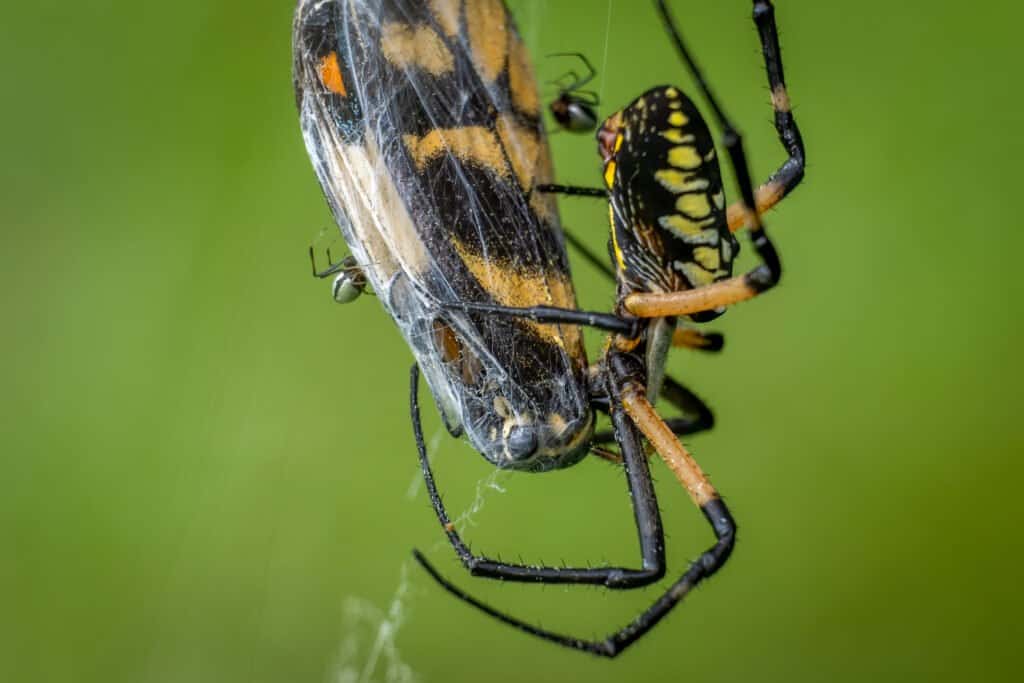
Some spiders have excellent eyesight, some have terrible eyesight and rely on other senses.
©samray/Shutterstock.com
Have you ever examined spiders closely and noticed the lack of tongues? But how do spiders eat without tongues? Rather than tongues, spiders use their legs to taste their food and then swallow it using the suction created by their stomachs. This means that they don’t need to chew their food; they can just turn it into a liquid.
Spiders, as arachnids, have two body segments comprised of the cephalothorax (head and thorax) and an abdomen with eight legs. Unlike humans, spiders lack tongues but instead possess chelicerae, which are jagged jaw-like appendages with pointed ends. These jaws (chelicerae) enable them to secure and break apart their prey into a mashed substance. Some spiders move their fangs in a vertical motion, while others move them in a horizontal pincer-like fashion.
Spiders have poisonous glands in their chelicerae, which can be used for protection, hunting, and digesting food. Behind the chelicerae are two flat cuticle plates: the upper lip is known as the labrum, and the lower one is called the labium. There is a tube-like opening behind the spider’s chelicerae just beyond these lips. The front end of the labium has a cluster of hairs that act like a filter, keeping any solid food from entering its mouth.
Do Spiders Chew Their Food?
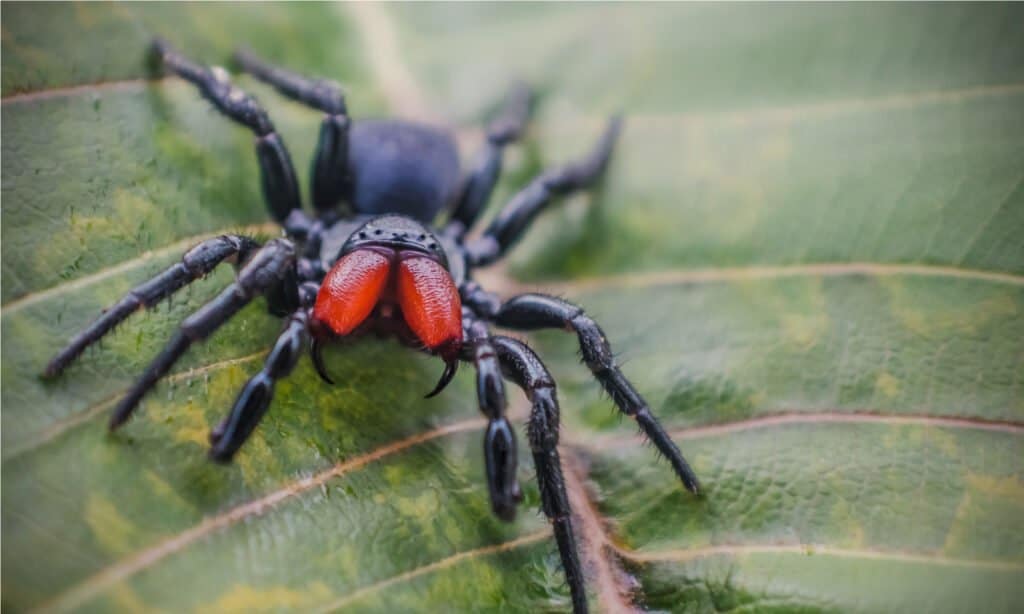
How do spiders eat without teeth? By several unique adaptations and methods that may surprise you.
©Brittany North/Shutterstock.com
Spiders have captivated the imagination of many, and one of the most common questions people ask about them is whether or not they chew their food. The answer is a resounding no! Spiders do not actually chew their food but rather suck the liquefied remains of their prey. This process is called external digestion, and it is accomplished by releasing digestive enzymes from the spider’s stomach onto the prey. The enzymes break down the prey’s tissues and liquefy them, which the spider then sucks up.
How Do Spiders Eat—Do Spiders Eat Their Prey Alive or Dead?
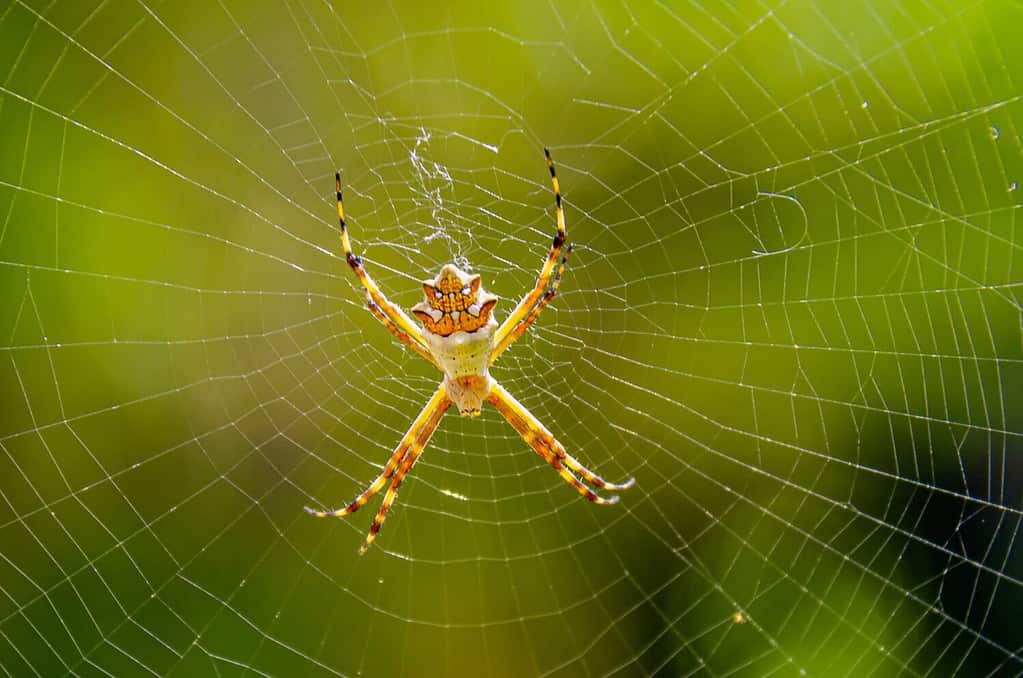
Most spiders eat their prey alive. Others wait until it is dead.
©Carlos Campi/Shutterstock.com
How do spiders eat their prey, dead or alive? This question has been the subject of much discussion among entomologists. Some species of spiders prefer to paralyze their prey with venom before consuming it. This immobilizes the prey and makes it easier to eat.
Another group of spiders eat their prey alive and active. Most spiders eat food that is still alive or very recently killed.
There are other spiders that are more opportunistic and will happily eat anything they find in their web, alive or not.
Do Spiders Drink Blood?
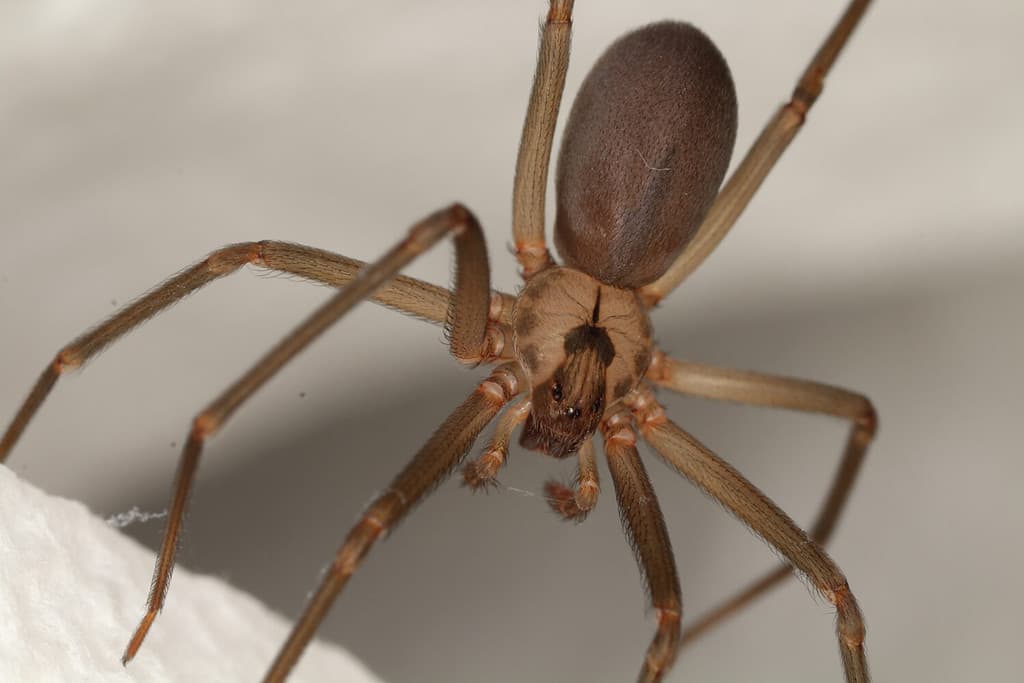
There are a few myths about how spiders eat. For example, spiders do not suck the juices out of their prey.
©Nick626/Shutterstock.com
There is an old myth that spiders do not eat the insects they kill; they only suck the “juices” or blood. But this myth about how spiders eat has since been disproven.
While it may be commonly believed that spiders simply drink the blood or juices of their prey, this notion is entirely incorrect. In reality, spiders are remarkably efficient predators with a highly specialized feeding process.
When a spider captures its prey within its intricate web or through agile hunting techniques, its intention is not solely to extract fluids but rather to consume the entire body as nourishment. Contrary to popular belief, spiders possess powerful digestive systems capable of breaking down and absorbing all essential nutrients from their captured victims.
How Do Spiders Eat—Do Spiders Have Teeth?
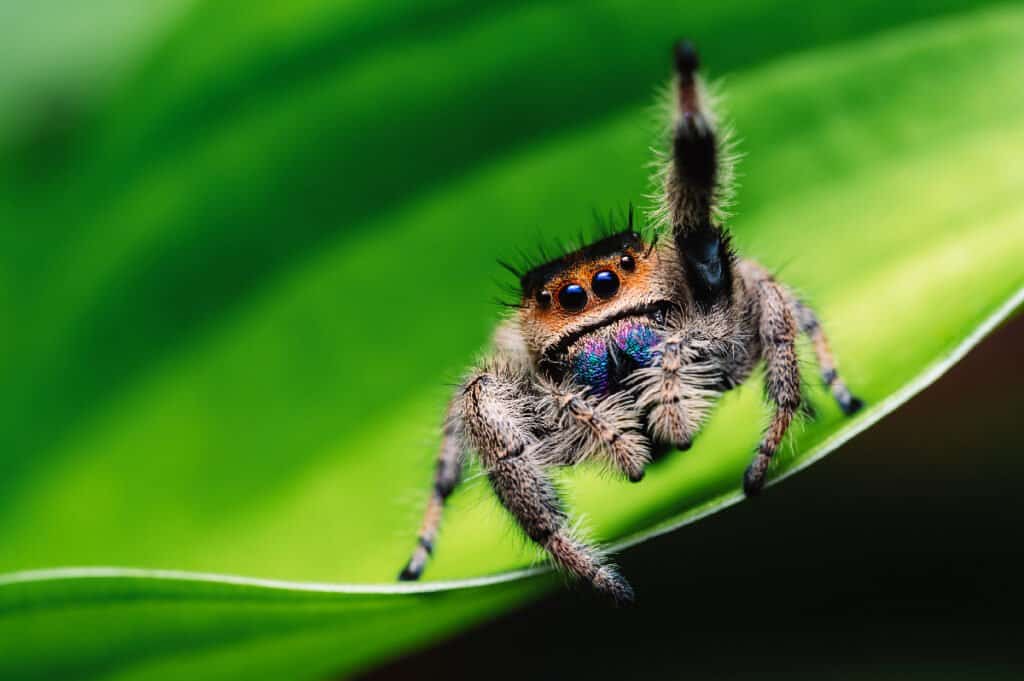
What we think of as spider fangs are not actually teeth. They are chelicerae.
©iStock.com/Jan Rozehnal
Spiders have a unique way of consuming their prey, as they lack traditional teeth and mandibles for chewing. How do spiders eat without teeth? They possess an alternative adaptation called chelicerae, which serve as their mouthparts and make up for the absence of teeth. These specialized jaws feature sharp edges that resemble fangs, allowing spiders to seize and immobilize their intended targets.
Often referred to as “jaws,” chelicerae can take on different shapes depending on the spider species. Some may resemble articulated fangs, while others more closely resemble pincers. One common characteristic shared by many spiders is the presence of hollow chelicerae that are either connected to or contain venom glands. These venomous appendages play a crucial role in injecting venom into prey or perceived threats.
The photo featured at the top of this post is © Tran The Ngoc/Shutterstock.com
Thank you for reading! Have some feedback for us? Contact the AZ Animals editorial team.






